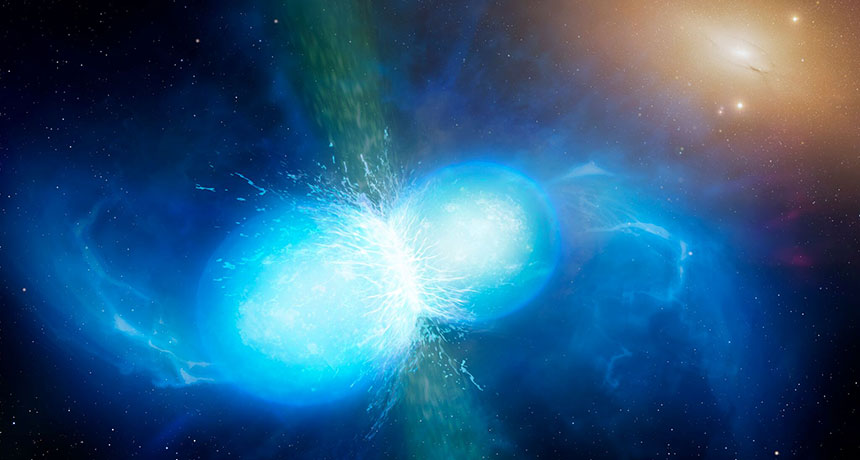Collision illuminates the mysterious makeup of neutron stars
Recently detected crash provides hints to size, innards of these stellar cores

SMASH HIT The recently detected violent collision of two neutron stars (illustrated) is helping scientists understand the strange stuff that makes up the incredibly dense objects.
Mark Garlick/University of Warwick